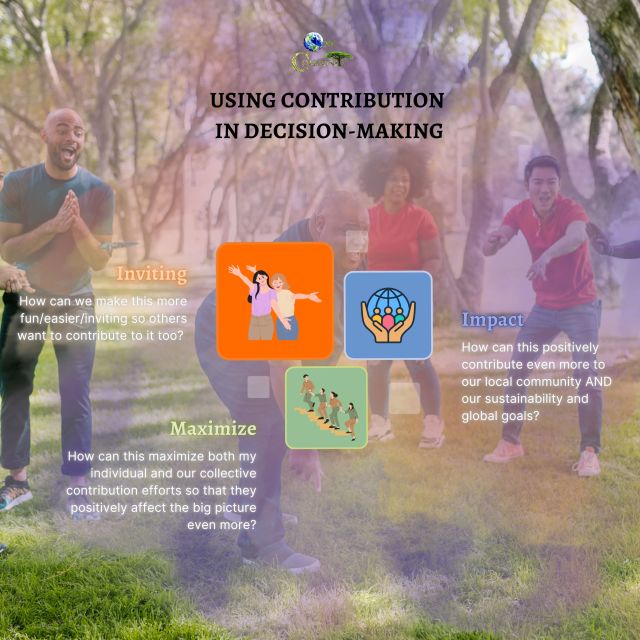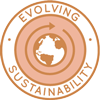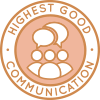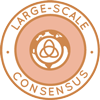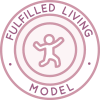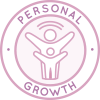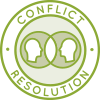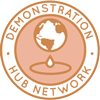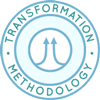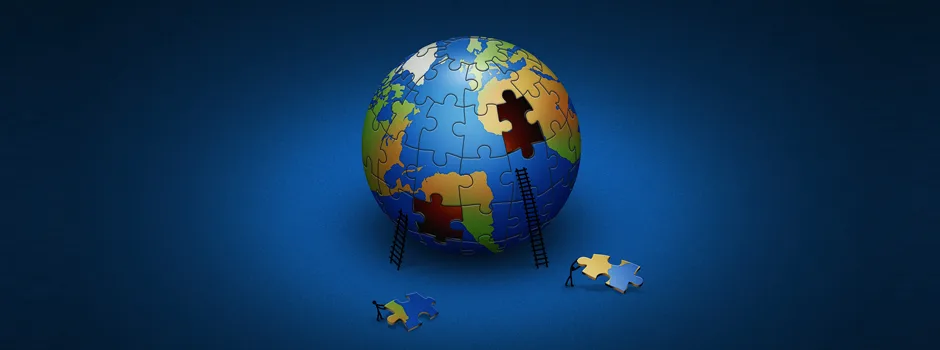
Community Contribution
One Community is a 100% volunteer organization. Everything that One Community is creating and will create and manage is possible because of “community contribution.” This page is about how we structure this now, how community contribution will function on the property, and why it is structured the way it is. We discuss this and more with the following sections:
- What is Contribution
- Using Contribution in Decision Making
- Why a Contribution Model
- The Details of the One Community Contribution Model
- Examples of Possible Days at One Community
- Resources
- Summary
- FAQ
RELATED PAGES
A DAY IN THE LIFE | TIME ALLOCATION PROJECTIONS | BECOMING A PIONEER
CLICK THESE ICONS TO JOIN US THROUGH SOCIAL MEDIA
WAYS TO PARTICIPATE WITH ONE COMMUNITY
SUGGESTIONS | CONSULTING | MEMBERSHIP | OTHER OPTIONS
WHAT IS CONTRIBUTION*
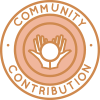 For One Community, contribution is a foundation of our culture as a global transformation organization. It is a cornerstone of our for The Highest Good of All philosophy and for creating One Community as a self-sufficient, comprehensively sustainable, and self-replicating teacher/demonstration hub. Right now we use a tangible contribution model for tracking and organizing contribution. It involves a minimum of about 10 hours of community contribution each week.
For One Community, contribution is a foundation of our culture as a global transformation organization. It is a cornerstone of our for The Highest Good of All philosophy and for creating One Community as a self-sufficient, comprehensively sustainable, and self-replicating teacher/demonstration hub. Right now we use a tangible contribution model for tracking and organizing contribution. It involves a minimum of about 10 hours of community contribution each week.
On the property we will use a 40-hour contribution model that will provide more free time and things to do with that time than most traditional models. The general structure of this 40 hours will be 20 hours of infrastructure expansion (energy, food, housing), 15 hours of contribution towards our open source strategy and keeping One Community running as an eco-tourism destination, and 5 weekly hours contributing to the social engagement programs. See the FAQ section below for more about this 20/15/5 choice.
This community contribution structure will allow One Community to:
- Eliminate the need for traditional jobs for all residents
- Demonstrate and provide an exceptional social and recreation structure
- Create more free time by including daily domestic tasks like cooking, cleaning, laundry, and childcare
- Meet our open source goals for replicating complete eco-cities and more
- Maintain and grow our revenue streams and global outreach program
- Build and continuously evolve all our sustainability components: food, energy, housing, city center, education, etc.
- Demonstrate a culture of personal growth that includes daily art, exercise, dance, design, nature immersion, reading groups, spirituality classes/meetings, cooking classes, kids classes, parenting classes, movie nights, game nights, and more
By working together we holistically address all the foundations of physical sustainability (click icons for complete pages):



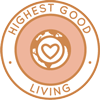
As well as the foundations of societal sustainability (socioeconomic, emotional, and personal needs):




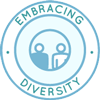
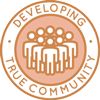
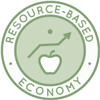
 | USING CONTRIBUTION IN DECISION MAKING* |
In decision making* at One Community, the core value of “Contribution” is applied by asking ourselves the following three key questions:
* To ensure we are always aligned with our purpose, values, and mission, One Community uses the values as defined by our organization as the compass for all our decision making; we then factor in the diversity of individual perspectives and experiences. We highly recommend this approach because it saves us hundreds, if not thousands, of hours of collaborative decision making time. If you are considering our model as a template for your own creation, we especially recommend you apply this approach too and use, adapt, or completely change the values we’ve presented so you too can create a clear guidance system that aligns with your own organizational/group/individual needs.

WHY A CONTRIBUTION MODEL
 The purpose of One Community’s community contribution model is to achieve our global change goals through a Highest Good of All approach to living that is more fun, fulfilling, and comprehensively sustainable. We also project this community contribution model, combined with our revenue streams and outreach program, will allow One Community to operate indefinitely as a place where no one will have to work a traditional job. People will be able to join through investing their time rather than money.
The purpose of One Community’s community contribution model is to achieve our global change goals through a Highest Good of All approach to living that is more fun, fulfilling, and comprehensively sustainable. We also project this community contribution model, combined with our revenue streams and outreach program, will allow One Community to operate indefinitely as a place where no one will have to work a traditional job. People will be able to join through investing their time rather than money.
The following additional benefits will result from this contribution model:
- Flexibility to create most of your own schedule
- Construction hours contribute to Home Shares ownership
- Does not require financial investment from its participants
- More free-time than almost any traditional work or living environment
- Living surrounded by other people creating something world-changing too
- An environment specifically collaboratively maintained for the deeper fulfillment of the 6 core human needs
- Significantly more fulfilled living, growth, and recreation opportunities than a traditional living environment
With more free time, and more free things to do with that time, we see this approach as a major part of the motivation and incentive to make this model self-replicating. We will open source share this contribution model and the enriched living experience it provides to make it easier and more attractive for others to join us in changing the world.
For a look into just one piece of the psychology that can drive a movement, creative contribution, and global change process like this (along with a positive nod for open source creation), take a look at this great overview of some of the research:
THE DETAILS OF THE
ONE COMMUNITY CONTRIBUTION MODEL
Cooperation is more efficient than competition in most situations. Common daily tasks like cooking, doing laundry, or providing childcare can be accomplished more efficiently through collaboration. Two or three people working together to do these tasks for 50 people is more efficient than 50 people all doing these things only for themselves. This saves time and improves quality of life for all involved.
Most community tasks are like this, requiring less input of time and resources when completed collaboratively. Groups building energy infrastructure, food infrastructure, operating the social architecture, business models, stewardship elements, etc. can provide these things for much larger groups. This is true for pretty much everything except housing and the One Community Home Shares model addresses housing.
The more people involved in the community, the easier it is to efficiently and effectively fulfill community responsibilities to meet community needs. As the population of One Community grows, we will be able to more easily build and open source additional infrastructure, offer more eco-tourism and scholarship programs, teach more classes, offer community tours, etc.
CLICK HERE FOR THE COMMUNITY CONTRIBUTION TIME ALLOCATION OUTLINE
KEEPING IT ALL RUNNING
 When we are living and working on the property, monthly consensus meetings will help coordinate and allocate the organization and structure of community contribution for all of One Community’s functions and expansions. Tasks will be divided first amongst people who request them, or have specialized skills necessary for their completion. The remaining tasks will be divided fairly on a rotating schedule for everyone else, including modifications to adjust for any task that may infringe on an individual’s personal moral/ethical/spiritual choices or physical abilities. A posted schedule will be maintained for meals, classes, group work activities, etc. so people can participate accordingly with maximum personal flexibility.
When we are living and working on the property, monthly consensus meetings will help coordinate and allocate the organization and structure of community contribution for all of One Community’s functions and expansions. Tasks will be divided first amongst people who request them, or have specialized skills necessary for their completion. The remaining tasks will be divided fairly on a rotating schedule for everyone else, including modifications to adjust for any task that may infringe on an individual’s personal moral/ethical/spiritual choices or physical abilities. A posted schedule will be maintained for meals, classes, group work activities, etc. so people can participate accordingly with maximum personal flexibility.
Designated project facilitators will log hours for larger projects requiring the contribution of many people. Smaller projects/tasks will be assigned a time value by consensus and logged by the individual doing the task. This will allow people to complete these tasks at the time and speed of their choice. Additionally, whenever possible, tasks will be completed as teams to make them more fun and more efficient. People’s community contribution time will also be kept in an open log so people can generally work whenever they want, time-bank additional hours, and see everyone else’s log if there is ever any question about fairness or contribution. Click here for how we are already doing this.

VACATION TIME AND TIME BANKING
 In addition to the weekly work schedule flexibility and more daily and weekly free time than traditional working models, this cooperative community contribution model will also provide more vacation flexibility. Starting after 6 months living on the property (delayed for the necessary amount of building required in the beginning stages of One Community), people will earn their first week of vacation time. Starting at this point, people will also be able to store/bank time by working additional hours so they can take time off when they want to. In the case of emergencies, established residents will also be able to borrow time.
In addition to the weekly work schedule flexibility and more daily and weekly free time than traditional working models, this cooperative community contribution model will also provide more vacation flexibility. Starting after 6 months living on the property (delayed for the necessary amount of building required in the beginning stages of One Community), people will earn their first week of vacation time. Starting at this point, people will also be able to store/bank time by working additional hours so they can take time off when they want to. In the case of emergencies, established residents will also be able to borrow time.
People will earn an additional week of vacation once they are on the property for 1 year. The 1-year point will also be when we will decide by consensus what to do for vacation and time-banking going forward. Vacation time will be scheduled during our planning meetings for the upcoming month so completion of necessary tasks continues to run smoothly.
EXAMPLES OF POSSIBLE DAYS AT ONE COMMUNITY
The One Community experience is meant to provide unparalleled variety, diversity, flexibility, and opportunity for people to live a life that is rich and fulfilling. The following are a few examples of how diverse and different these days can actually be.
HERE IS A POSSIBLE TYPICAL DAY
6:00-7:00 AM Personal enrichment class from a diversity of choices (see the Fulfilled Living Page)
7:30-8:30 AM Skills or other class taught by you (could be anything, see the Social Architecture Page)
9:00-10:00 AM Home-cooked breakfast at the Duplicable City Center
10:00-1:00 PM Straw Bale Village or Aquaponics design contribution
1:00-2:00 PM Home-cooked lunch at the Duplicable City Center
2:00-3:00 PM After lunch working with open source team to share the Food Infrastructure evolutions
3:30-6:30 PM Building Earthbag Village with the group – today’s focus: the vermiculture communal bathroom
6:30-7:30 PM Swim in the pond and then relax until dinner
7:30-9:30 PM Home cooked dinner at the Duplicable City Center with live music, after dinner somebody hosts a movie night or bonfire.
Summary: took one class, ate three home-cooked meals, enjoyed a couple hours of live music, and contributed 8 hours to the community (hosted 1 class, 1 hour open source contribution, 3 hours Straw Bale Village or Aquaponics design collaboration, 3 hours building the Earthbag Village).
HERE IS A POSSIBLE DAY WITH MORE OF A FAMILY FOCUS
6:00-7:00 AM Family yoga class
7:30-8:30 AM Meditation class taught by you
9:00-10:00 AM Home-cooked breakfast at the Duplicable City Center
10:00-1:00 PM Gardening and landscaping
1:00-2:00 PM Home-cooked lunch at the Duplicable City Center
2:00-3:00 PM After lunch story time for kids, led by you
3:30-6:30 PM Building the Earthbag Village with the group – today’s focus: flooring
6:30-7:30 PM You were going to take an art class but decided to just rest and relax until dinner instead
7:30-9:30 PM Home-cooked dinner at the Duplicable City Center with live music. After dinner somebody hosts a dance party and somebody else is hosting a game night
Summary: took one class, ate three home cooked meals, enjoyed a couple hours of live music, and contributed 8 hours to the community (hosted 1 class, 1 hour child care, 3 hours gardening, 3 hours building the Earthbag Village).
CLICK HERE FOR THE COMMUNITY CONTRIBUTION TIME ALLOCATION OUTLINE
HERE IS A POSSIBLE DAY FOR SOMEONE WHO PREFERS LESS STRUCTURE
7:30-8:30 AM Meditation class taught by you
8:30-2:00 PM Ate breakfast, relaxed, did 3 hours of gardening, then ate lunch
2:00-3:00 PM After lunch story time for kids, led by you
3:30-6:30 PM Building the Earthbag Village with the group – today’s focus: door framing and installation
Summary: Classes, story-time, and building Pod 1 were structured community contribution time equaling 5.5 hours. The other 3 hours of gardening could have been done at any time and were completed whenever this person wanted along with all the other activities.
HERE IS WHAT THE NEXT FULL DAY MIGHT LOOK LIKE
6:00-8:30 AM Got up early and put in 2.5 hours of open source contribution editing video and blogging
9:00-10:00 AM Home-cooked breakfast at the Duplicable City Center
10:00-11:30 AM Relaxed with family and/or friends or by yourself
11:30-2:30 PM Home-cooked Lunch at the Duplicable City Center prepared and cleaned up after by you
3:00-6:00 PM Building the Earthbag Village with the group – today was mostly filling earthbags
6:00-7:30 PM Relaxed with family and/or friends or by yourself
7:30-9:30 PM Home-cooked dinner at the Duplicable City Center with live music
After dinner there may be a community meeting, moonlight hike, bonfire, or maybe everyone is just relaxing around the Duplicable City Center or at home.
Summary: worked on the computer, spent 3 hours of quality time with your kids, did some building, enjoyed a couple hours of live music, and contributed 8.5 hours to the community (2.5 hours contributing to the open source model, 3 hours preparing and cleaning up after a meal for the community, 3 hours building the Earthbag Village).
CLICK HERE FOR THE COMMUNITY CONTRIBUTION TIME ALLOCATION OUTLINE
HERE’S THE SAME DAY FOR SOMEONE WHO PREFERS LESS STRUCTURE
3:00-6:00 PM Building the Earthbag Village with the group – today was mostly filling earthbags
Summary: Structured time was preparing the meal and building the Earthbag Village. The rest was unstructured and completed based on the preference of the individual.
The point of all this is to show that, with a little planning, everything that needs to get done can be done with flexibility. The two example days are modeled on a traditional 8-hour day but a person will be able to structure and compact or spread out their weekly community contribution however they like, because the structure of the model makes sure everything is getting done.

RESOURCES
- One Community Resource: A Culture of Personal Growth
- One Community Resource: Fulfilled Living
- Article: “21 Ways to Do A Good Deed”
- Article: “25 Things We Can Do to Make the World a Better Place”
- Article: “The Currency of Time”
- Use this page (click here) if you have a resource you’d like to suggest be added here
One Community has also created a Contribution Lesson Plan as part of the open source Highest Good Education component. This lesson plan is purposed to teach all subjects, to any learning level, in any environment using the central theme of “Contribution.” Here is the mind map for the lesson plan:
SUMMARY
 Community contribution is a more efficient and fun way to accomplish tasks. Through each community member putting in a set number of hours per week, we complete tasks and achieve collective community goals faster and using less resources. One Community’s higher levels of productivity, increased availability of free time, and richer living experience with more things to do with that free time will be possible through a 40-hour-per-person weekly contribution model. This is part of our Highest Good society model and includes diverse and ongoing fulfilled living and personal growth components, building our infrastructure, maintaining One Community as a self-sustainable teacher/demonstration hub and eco-tourism destination, and open source sharing it all. The version of this that we are already using can be read about on our tangible contribution page.
Community contribution is a more efficient and fun way to accomplish tasks. Through each community member putting in a set number of hours per week, we complete tasks and achieve collective community goals faster and using less resources. One Community’s higher levels of productivity, increased availability of free time, and richer living experience with more things to do with that free time will be possible through a 40-hour-per-person weekly contribution model. This is part of our Highest Good society model and includes diverse and ongoing fulfilled living and personal growth components, building our infrastructure, maintaining One Community as a self-sustainable teacher/demonstration hub and eco-tourism destination, and open source sharing it all. The version of this that we are already using can be read about on our tangible contribution page.
FREQUENTLY ANSWERED QUESTIONS
Q: Where can I learn more about your other values and how you use each of them in your organization?
Click the icons below to be taken to a complete page for each value:
Q: Where can I get more information about your philosophies for world change?
Please take a look at each of these additional pages: (click icons)
Q: Could a community be run with less community contribution?
Yes, our projections show that once the infrastructure was completed, a community of 50-100 people could actually maintain self-sufficiency with as low as 10 hours a week per person if no revenue producing model was included. This could be accomplished with as low as 20 hours a week while still maintaining an eco-tourism resort.
Q: If it can be run on less, why is this system based on 40 hours of weekly contribution?
The One Community contribution model is based on a 40-hour week to maintain and evolve both our open source and global transformation goals and our culture of personal growth and enriched fulfilled living. Even with 40 hours, people will still have significantly more free time than is found in the standard American lifestyle. This is because:
- Community contribution includes domestic duties like food preparation, laundry, and cleaning and
- We will have reduced (or completely eliminated) drive time due to the walking-distance proximity of food, recreation, socialization, and education
Q: Will the 40-hour work week model eventually become a lesser work-week model?
Due to One Community’s open source, global transformation, and indefinite expansion goals, we do not expect to ever reduce the 40-hour community contribution expectation. For this reason, we desire to attract people to join our team who agree with us that building, sharing, hosting, making a global difference, and participating in ongoing creation and collaboration make for a very fun and enjoyable “work week” that does not need to be reduced.
Q: How will Community Contribution work as people age?
It will work the same for all ages. As people change, they will contribute to appropriate activities for their ability levels. As a person requires less-physical activities, alternatives could include reading to children, light gardening, cooking, teaching classes, etc. so that all people, no matter their age, feel their inclusion and importance in maintaining One Community.
Q: Does One Community have a retirement plan?
Yes, you can read about it on our retirees page. That said, everyone in our group considers the lifestyle we are creating as enjoyable and something they want to do for the rest of their lives. Ability-appropriate tasks will always be available and we seek people who want to live their entire life with active participation.
Q: Why can’t everyone just contribute what they want without accountability or consequences?
One Community began with a model like that and is was unsuccessful. From this experience we instead created the hands-off administrative policy we now use. This policy allows people to still be 100% at choice in their participation at One Community while also assuring that the team effort and everything we are relying upon each other for is accomplished.
Q: How will you keep participation ongoing and fair on the property? How will you assure everyone does their part?
We will use an adapted form of the hands-off administrative policy we’ve tested and proven successful over the last couple years. This policy maintains transparency, equal participation and fairness without the need for hierarchical leadership structures, and leads to removal of anyone who does not do their fair share.
 One Community
One Community